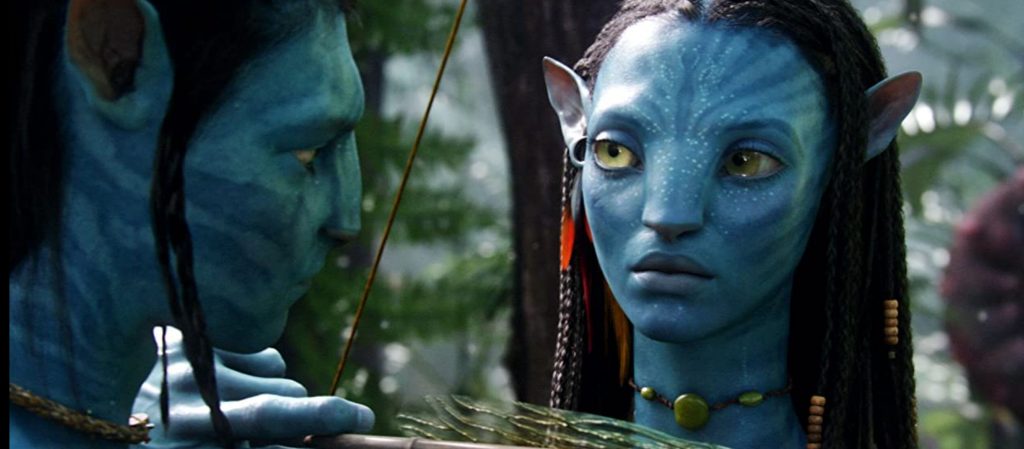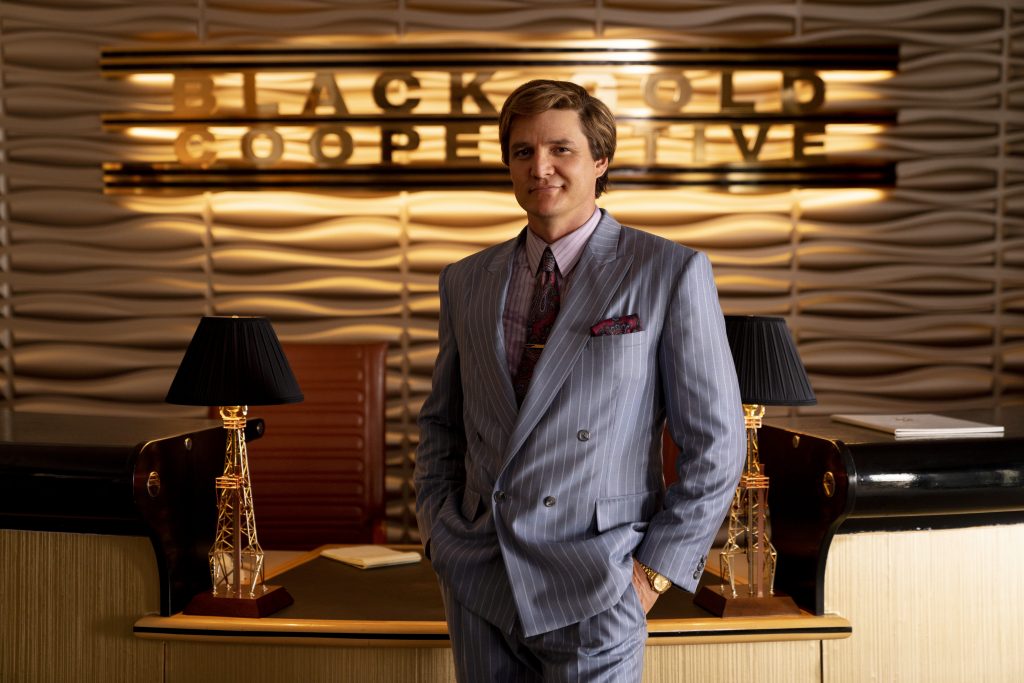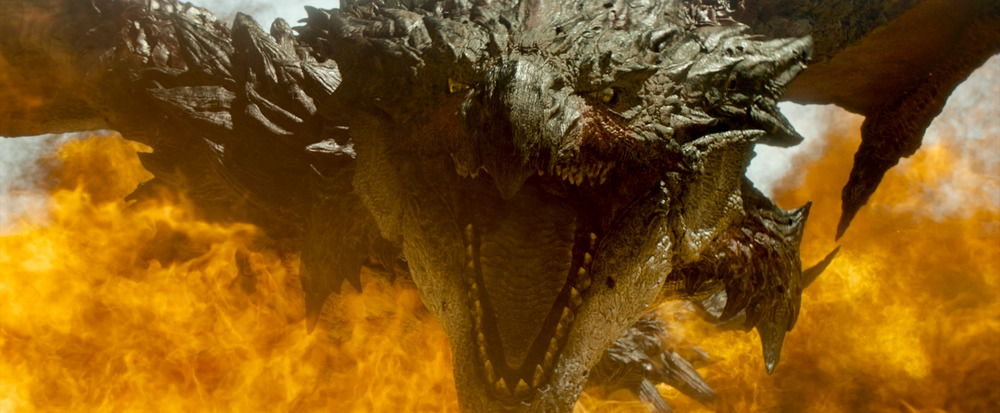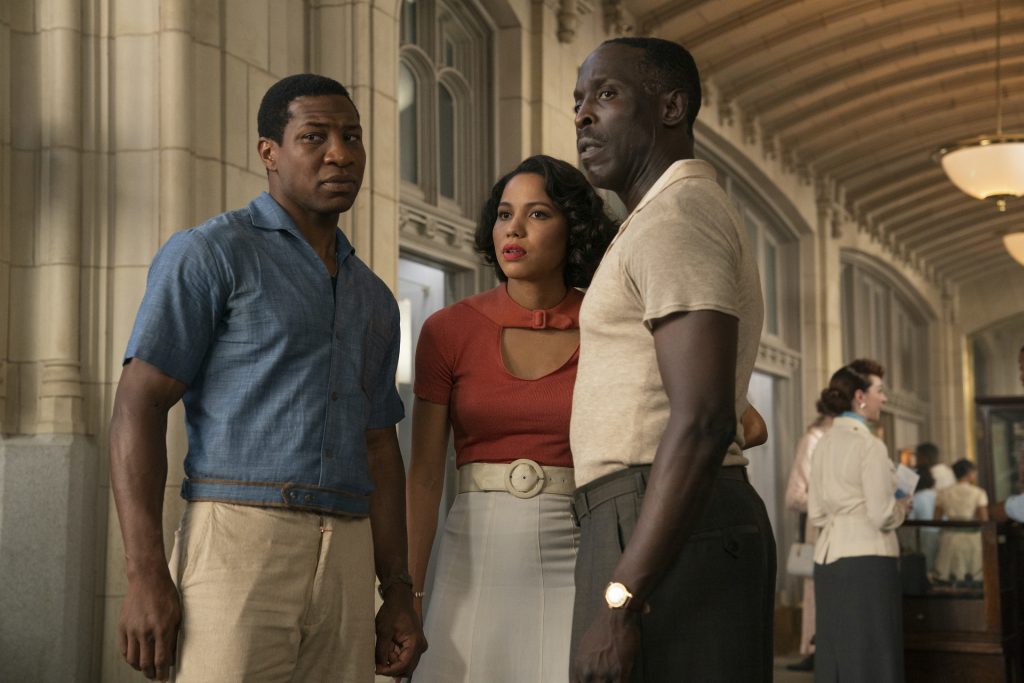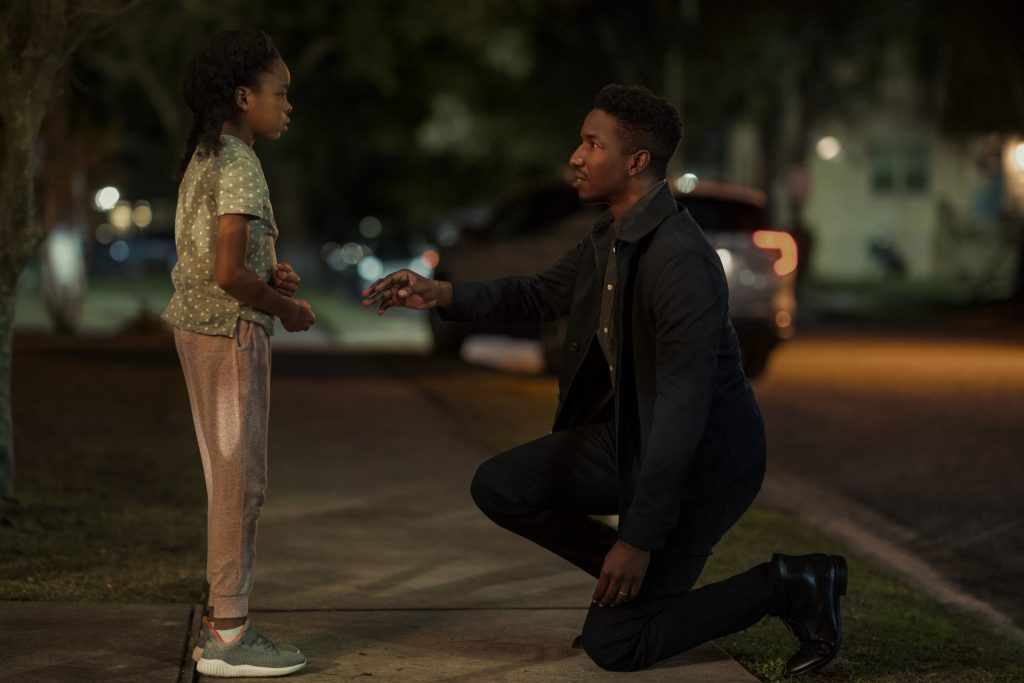March 15, 2021
by Carla Hay

“Zack Snyder’s Justice League”
Directed by Zack Snyder
Culture Representation: Set in several fictional DC Comics places such as Gotham, Metropolis, Central City and Atlantis, “Zack Snyder’s Justice League” has a predominantly white cast of characters (with some African Americans and Asians), ranging from superheroes to regular citizens to villains.
Culture Clash: An all-star group of superheroes called Justice League gather to do battle against evil entities that want to take over the universe.
Culture Audience: “Zack Snyder’s Justice League” will appeal primarily to people who are fans of epic superhero movies that have a dark and brooding tone.
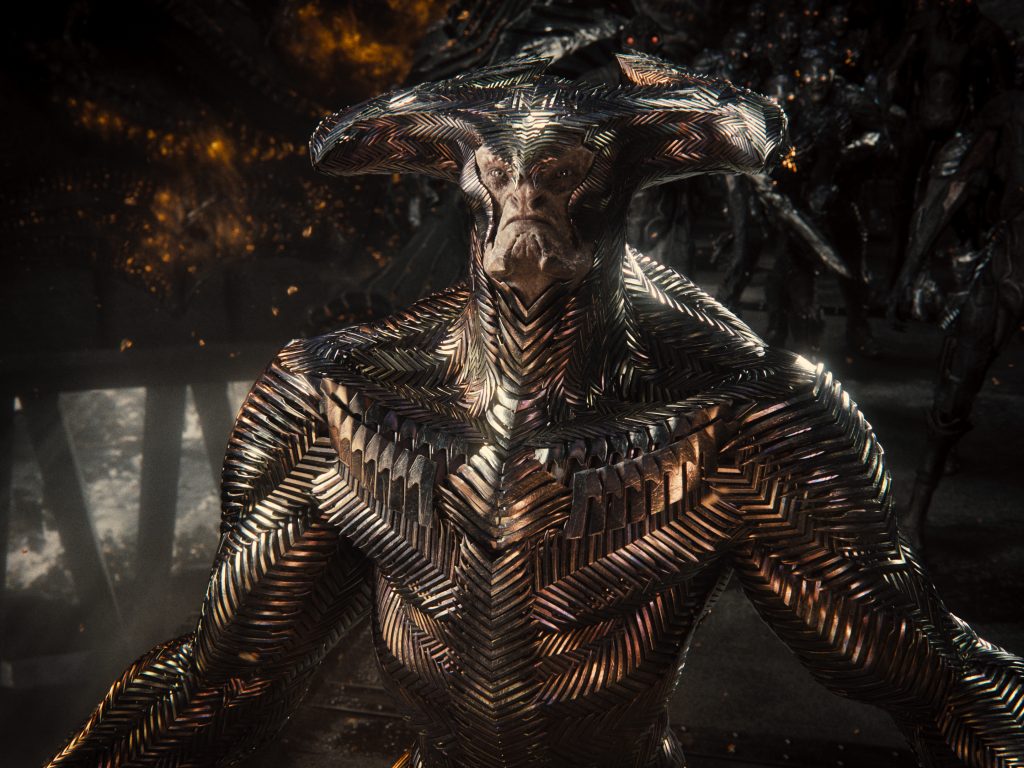
“Zack Snyder’s Justice League” is a four-hour superhero movie that can be summed up in four words: “definitely worth the wait.” Also unofficially known as “The Snyder Cut,” this extravaganza is the director’s cut of 2017’s “Justice League,” an all-star superhero movie that was panned by many fans and critics. Even though Snyder was the only director credited for “Justice League,” it’s a fairly well-known fact that after Snyder couldn’t complete the film because his 20-year-old daughter Autumn committed suicide, writer/director Joss Whedon stepped in to finish the movie. Whedon made some big changes from Snyder’s original vision of “Justice League.” (There’s a dedication to Autumn that says “For Autumn” at the end of “Zack Snyder’s Justice League.”) The “Justice League” that was released in 2017 had a lot of wisecracking jokes, and the violence and language were toned down to a more family-friendly version of the movie.
Since the release of “Justice League” in 2017, fans of DC Comics movies demanded that Warner Bros. Pictures “release The Snyder Cut” of the film. And due to popular demand, Snyder was able to make the “Justice League” movie he originally intended to make. “Zack Snyder’s Justice League” is part of HBO Max’s lineup of original content.
As promised, “Zack Snyder’s Justice League” is a darker and more violent version of the 2017 “Justice League” movie, but it also has a lot more emotional depth and gives room for more character development and intriguing possibilities within the DC Extended Universe (DCEU). “Zack Snyder’s Justice League” was written by Chris Terrio, with Snyder, Terrio and Will Beall credited for the story concept. Terrio and Whedon were credited screenwriters for “Justice League.”
Does “Zack Snyder’s Justice League” live up to the hype? Mostly yes. The scenes with the main characters are of higher quality and are more riveting than in the original “Justice League.” The action scenes are more realistic. The overall pacing and tone of the story are also marked improvements from the 2017 version of “Justice League.” However, the reason for the cameo appearance of The Joker (played by Jared Leto) in the movie’s epilogue isn’t what it first appears to be, so some fans might be disappointed. And the appearance of Ryan Choi/Atom (played by Ryan Zheng) is very brief (less than two minutes), and he doesn’t talk in the movie.
Many people watching “Zack Snyder’s Justice League” have already seen “Justice League,” so there’s no need to rehash the plot of “Justice League.” This review will consist primarily of the content in “Zack Snyder’s Justice League” that was not in “Justice League.” For those who have not seen “Justice League,” the basic summary is that an all-star group of superheroes have assembled to battle an evil villain that wants to take over the universe by gathering three mystical Mother Boxes, which are living machines that have enough energy to cause widespread destruction.
The superheroes are Batman/Bruce Wayne (played by Ben Affleck), Superman/Clark Kent (played by Henry Cavill), Wonder Woman/Diana Prince (played by Gal Gadot), Cyborg/Victor Stone (played by Ray Fisher), The Flash/Barry Allen (played by Ezra Miller) and Aquaman/Arthur Curry (played by Jason Momoa)—all seen together in a live-action movie for the first time in “Justice League.” The villain is Steppenwolf (voiced by Ciarán Hinds), but “Zack Snyder’s Justice League” features the first movie appearances of two arch villains that have more power and authority than Steppenwolf: DeSaad (voiced by Peter Guinness) and the supreme villain Darkseid (voiced by Ray Porter).
“Zack Snyder’s Justice League” is divided into chapters with these titles:
- Part 1 – “Don’t Count On It, Batman”
- Part 2 – “Age of Heroes”
- Part 3 – “Beloved Mother, Beloved Son”
- Part 4 – “Change Machine”
- Part 5 – “All the King’s Horses”
- Part 6 – “Something Darker”
- Epilogue
In “Zack Snyder’s Justice League,” Steppenwolf is more of a sniveling lackey than he was in “Justice League,” because there are multiple scenes of him acting subservient to DeSaad. Steppenwolf is still aggressive against his foes, while DeSaad is sinister and imperious, and Darkseid is fearsome and unforgiving. In a new scene between DeSaad and Steppenwolf, DeSaad scolds Steppenwolf for betraying the Great One and Steppenwolf’s own family. Steppenwolf replies with regret, “I saw my mistake!”
When Bruce goes to Iceland to recruit Arthur, their confrontation is a little more violent and Bruce flashes a wad of cash to entice Arthur to join Justice League. This scene is extended to show some Icelandic women singing on the seashore after Arthur declines Bruce’s offer, Arthur takes off his sweater, and swims away. One of the women picks up Arthur’s sweater and smells it, not in a salacious way, but as a way to give her comfort.
Back in Metropolis, there’s previously unseen footage of Daily Planet newspaper reporter Lois Lane (played by Amy Adams) getting coffee for a local cop. It becomes clear that this was a routine for her, since she’s seen doing this again in the scene where she finds out that Superman has come back to life. It gives some depth to Lois trying to have a normal routine after the death of her fiancé Clark Kent/Superman. It’s mentioned in the movie that Lois took a leave of absence from the Daily Planet after Clark died.
And there’s an extended scene of Wonder Woman fighting off terrorists in a government building. “Zack Snyder’s Justice League” has less shots of Wonder Woman fighting in slow motion and more shots of her speeded up while she’s fighting. And in the terrorist scene, “Zack Snyder’s Justice League” puts more more emphasis on Wonder Woman saving a group of visiting schoolkids (who are about 10 or 11 years old) and their teachers, who are taken hostage during this fight.
After Wonder Woman defeats the terrorists, she says to a frightened girl: “Are you okay, princess?” The girl replies, “Can I be you someday?” Wonder Woman answers, “You can be anything you want to be.”
Victor Stone/Cyborg gets the most backstory in “Zack Snyder’s Justice League.” Viewers will see the car accident that led to his scientist father Silas Stone (played by Joe Morton) deciding to save Victor’s life by using the Mother Box on Earth to turn Victor into Cyborg. The love/hate relationship that Victor has with his father is given more emotional gravitas in “Zack Snyder’s Justice League.” Viewers see in the movie that even before the car accident, there was tension between Silas and Victor because of Silas’ workaholic ways. There are also never-before-seen scenes with Victor’s mother Dr. Elinore Stone (played by Karen Bryson), who died in the car crash.
And speaking of car crashes, there’s an added scene of Barry Allen /The Flash applying for a job as a dog walker at a pet store called Central Bark. Before he walks into the store, he locks eyes with passerby Iris West (played by Kiersey Clemons), in the way that people do when they have mutual attraction to each other. Iris gets into her car to drive off, but a truck driver (who was distracted by reaching for a hamburger he dropped on the floor of the vehicle) slams into Iris’ car, and Barry rescues her.
During this rescue, Barry grabs a hot dog wiener from a food vendor cart that was smashed in the accident and gets back to the pet store in time to feed the wiener to the dogs. Barry then quips to the store manager, “Do I start on Monday?” It’s an example of the touches of humor that the movie has, to show it isn’t completely dark and gloomy. By the way, this car accident/rescue scene is the only appearance of Iris in the movie.
“Justice League” got a lot of criticism for the movie’s corny dialogue that many viewers thought cheapened what should have been a more serious tone to the movie. And even the parts of “Justice League” that were supposed to be comedic were slammed by fans and critics for not being very funny. “Zack Snyder’s Justice League” removes a few of the most cringeworthy lines that “Justice League” had.
For example, in the “Justice League” scene where Barry/The Flash and Victor/Cyborg are digging up Superman’s grave, Barry makes an awkward attempt to bond with Victor by extending his hand in a fist bump toward Victor, but Victor doesn’t return the gesture. Barry then makes a remark that the timing might be off and the fist bump might be too racially charged for the moment. These lines are completely cut from “Zack Snyder’s Justice League,” but the movie still has The Flash/Cyborg fist bump after the group showdown battle with Steppenwolf.
The gravedigging scene in “Zack Snyder’s Justice League” is changed to Barry saying to Victor: “Wonder Woman: Do you think she’d go for a younger guy?” Victor replies, “She’s 5,000 years old, Barry. Every guy is a younger guy.”
Another removal from “Justice League” are some words that Lois utters when she and a resurrected Superman are reunited, and he takes her to a corn field on the Kent family farm. In the original “Justice League” Lois tells him, “You smell good.” And he replies, “Did I not before?” In “Zack Snyder’s Justice League,” Lois’ line is changed to “You spoke.” And Superman gives the same reply, “Did I not before?”
But make no mistake: Even though “Zack Snyder’s Justice League” has some dialogue that’s intended to be funny, the movie definitely has a heavier and edgier tone than “Justice League.” Aquaman still does some joyous whooping and hollering during the fight scenes with Steppenwolf, but it’s toned down in “Zack Snyder’s Justice League” so he doesn’t sound so much like a happy guy at a frat party. And these superheroes say occasional curse words that wouldn’t make the cut in a movie that’s intended for people all ages.
Even the music that plays during the end credits reflects this more somber and more reflective tone. In “Justice League,” the music playing over the end credits was Gary Clark Jr.’s bluesy-rock, upbeat version of The Beatles’ “Come Together.” In “Zack Snyder’s Justice League,” the music that plays over the end credits is Allison Crowe’s raw and soulful version of Leonard Cohen’s “Hallelujah,” which is a song that’s often played at funerals in tribute to someone.
In “Zack Snyder’s Justice League,” there’s a lot more screen time devoted to showing the aftermath of death and how the loved ones left behind are grieving, including extended scenes of how Superman’s adoptive mother Martha Kent (played by Diane Lane) and Lois are dealing with Clark/Superman’s death. Arthur/Aquaman keeps going back to the deep ocean to spend time with the preserved body of his father. Victor visits the gravesite of his mother. And then later, Victor goes to the gravesites of his mother and his father, who was killed when a STAR Labs building exploded. Wonder Woman and Aquaman discuss a past war between the Amazons and the Atlanteans and how there are still lingering repercussions of that destruction.
“Zack Snyder’s Justice League” also delivers more details on what happened in the STAR Labs building during the part of the movie where Superman was resurrected and Steppenwolf stole the Mother Box that was hidden by humans on Earth. This new scene gives more context and shows that Steppenwolf did not get the Mother Box so easily. Victor made a decision that cost him his life, while certain members of Justice League were inside the building soon after the Mother Box was taken.
There are also extended scenes with Mera (played by Amber Heard), Nuidis Vulko (played by Willem Dafoe), Alfred Pennyworth (played by Jeremy Irons) and Deathstroke (played by Joe Manganiello). And the epic battle with Steppenwolf toward the end is truly a spectacle to behold. Viewers will see DeSaad’s and Darkseid’s reactions to this fight. The movie’s epilogue includes a conversation between Bruce and Martian Manhunter that strongly indicates that fans should look for Martian Manhunter to play a major role in another DCEU movie. Simply put: “Zack Snyder’s Justice League” is mostly a triumph and can easily be considered one the the best DCEU movies of all time.
HBO Max will premiere “Zack Snyder’s Justice League” on March 18, 2021.

